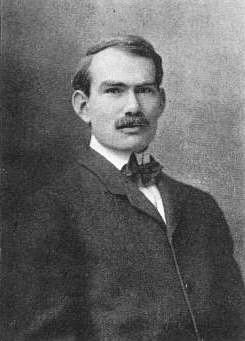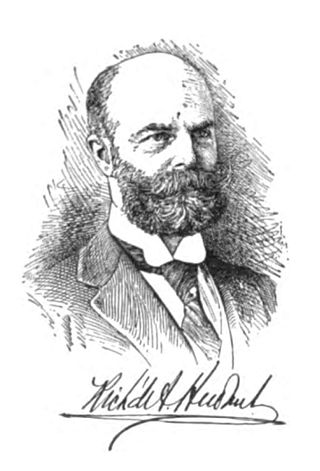Related Research Articles

Emile Berliner originally Emil Berliner, was a German-American inventor. He is best known for inventing the lateral-cut flat disc record used with a gramophone. He founded the United States Gramophone Company in 1894; The Gramophone Company in London, England, in 1897; Deutsche Grammophon in Hanover, Germany, in 1898; and Berliner Gram-o-phone Company of Canada in Montreal in 1899. Berliner also invented what was probably the first radial aircraft engine (1908), a helicopter (1919), and acoustical tiles (1920s).

Lee de Forest was an American inventor and a fundamentally important early pioneer in electronics. He invented the first practical electronic amplifier, the three-element "Audion" triode vacuum tube in 1906. This helped start the Electronic Age, and enabled the development of the electronic oscillator. These made radio broadcasting and long distance telephone lines possible, and led to the development of talking motion pictures, among countless other applications.

A toupée is a hairpiece or partial wig of natural or synthetic hair worn to cover partial baldness or for theatrical purposes. While toupées and hairpieces are typically associated with male wearers, some women also use hairpieces to lengthen existing hair, or cover a partially exposed scalp.
Diamond v. Chakrabarty, 447 U.S. 303 (1980), was a United States Supreme Court case dealing with whether living organisms can be patented. Writing for a five-justice majority, Chief Justice Warren E. Burger held that human-made bacteria could be patented under the patent laws of the United States because such an invention constituted a "manufacture" or "composition of matter". Justice William J. Brennan Jr., along with Justices Byron White, Thurgood Marshall, and Lewis F. Powell Jr., dissented from the Court's ruling, arguing that because Congress had not expressly authorized the patenting of biological organisms, the Court should not extend patent law to cover them.
United States v. Paramount Pictures, Inc., 334 U.S. 131 (1948), was a landmark United States Supreme Court antitrust case that decided the fate of film studios owning their own theatres and holding exclusivity rights on which theatres would show their movies. It would also change the way Hollywood movies were produced, distributed, and exhibited. It also opened the door for more foreign and independent films to be shown in U.S. theaters. The Supreme Court affirmed the United States District Court for the Southern District of New York's ruling that the existing distribution scheme was in violation of United States antitrust law, which prohibits certain exclusive dealing arrangements.

Cotton pads are pads made of cotton which are used for medical or cosmetic purposes. For medical purposes, cotton pads are used to stop or prevent bleeding from minor punctures such as injections or venipuncture. They may be secured in place with tape. Cotton pads are also used in the application and the removal of makeup. Cotton pads are soft enough that they can be used to clean babies. Cotton balls have much of the same applications as cotton pads, and can be used interchangeably.
Graver Tank & Manufacturing Co. v. Linde Air Products Co., 339 U.S. 605 (1950), was an important United States Supreme Court decision in the area of patent law, establishing the propriety of the doctrine of equivalents, and explaining how and when it was to be used.
The United States is considered to have the most favorable legal regime for inventors and patent owners in the world. Under United States law, a patent is a right granted to the inventor of a (1) process, machine, article of manufacture, or composition of matter, (2) that is new, useful, and non-obvious. A patent is the right to exclude others, for a limited time from profiting from a patented technology without the consent of the patent holder. Specifically, it is the right to exclude others from: making, using, selling, offering for sale, importing, inducing others to infringe, applying for an FDA approval, and/or offering a product specially adapted for practice of the patent.

Giles Sutherland Rich was an associate judge of the United States Court of Customs and Patent Appeals (CCPA) and later on was a United States Circuit Judge of the United States Court of Appeals for the Federal Circuit (CAFC), and had enormous impact on patent law. He was the first patent attorney appointed to any federal court since Benjamin Robbins Curtis was appointed to the Supreme Court in 1851.

Toray Industries, Inc. is a multinational corporation headquartered in Japan that specializes in industrial products centered on technologies in organic synthetic chemistry, polymer chemistry, and biochemistry.

Richard Alexander Hudnut was an American businessman recognized as the first American to achieve international success in cosmetics manufacturing. The company once maintained separate US and European headquarters on Fifth Avenue in New York City and on the Rue de la Paix in Paris, respectively.
The Mills Novelty Company, Incorporated of Chicago was once a leading manufacturer of coin-operated machines, including slot machines, vending machines, and jukeboxes, in the United States. Between about 1905 and 1930, the company's products included the Mills Violano-Virtuoso and its predecessors, celebrated machines that automatically played a violin and, after about 1909, a piano. By 1944, the name of the company had changed to Mills Industries, Incorporated. The slot machine division was then owned by Bell-O-Matic Corporation. By the late 1930s, vending machines were being installed by Mills Automatic Merchandising Corporation of New York.
Microsoft Corp. v. AT&T Corp., 550 U.S. 437 (2007), was a United States Supreme Court case in which the Supreme Court reversed a previous decision by the Federal Circuit and ruled in favor of Microsoft, holding that Microsoft was not liable for infringement on AT&T's patent under 35 U.S.C. § 271(f).

James William McGhee was an inventor of the drapery hook. He was also a manufacturer, prospector, carpenter, contractor, and interior design specialist.
General Talking Pictures Corp. v. Western Electric Co., 304 U.S. 175 (1938), was a case that the Supreme Court of the United States decided in 1938. The decision upheld so-called field-of-use limitations in patent licenses: it held that the limitations were enforceable in a patent infringement suit in federal court against the licensee and those acting in concert with it—for example, a customer that knowingly buys a patented product from the licensee that is outside the scope of the license.
Daniel Leavitt was an early American inventor who, with his partner Edwin Wesson, patented the first revolver after Samuel Colt's, and subsequently manufactured one of the first American revolving pistols. The innovative design was manufactured only briefly before a patent suit by Colt forced the company to stop producing the Leavitt & Wesson Dragoon revolver. But Leavitt's early patents, and those of his partner Wesson, stoked competition and helped drive the technological and manufacturing boom that produced the modern firearms industry.
A film studio is a major entertainment company that makes films. They may have their own privately owned studio facility or facilities; however, most firms in the entertainment industry have never owned their own studios, but have rented space from other companies. The day-to-day filming operations are generally handled by their production company subsidiary.
United States v. General Electric Co., 272 U.S. 476 (1926), is a decision of the United States Supreme Court holding that a patentee who has granted a single license to a competitor to manufacture the patented product may lawfully fix the price at which the licensee may sell the product.
The Schell Leather Company is a manufacturer of leather (originally), plastic, vinyl, nylon, and synthetic material goods originally based in Cincinnati, Ohio founded by Albert and Charles J. Schell from 1865 or 1870 to at least 1985.
References
- ↑ The Milwaukee Sentinel - Jan 9, 1944 "This pretty young woman is wearing Nylon wig...." [ dead link ]
- ↑ Office, United States Patent (1961). Official Gazette of the United States Patent Office. U.S. Department of Commerce. p. 836.
- ↑ Patent details